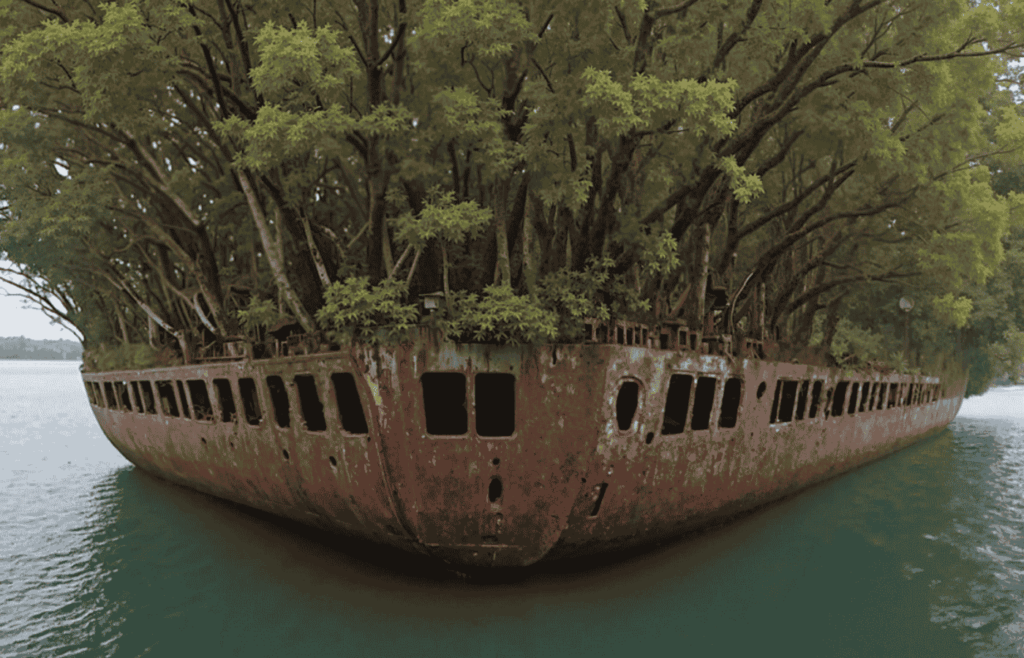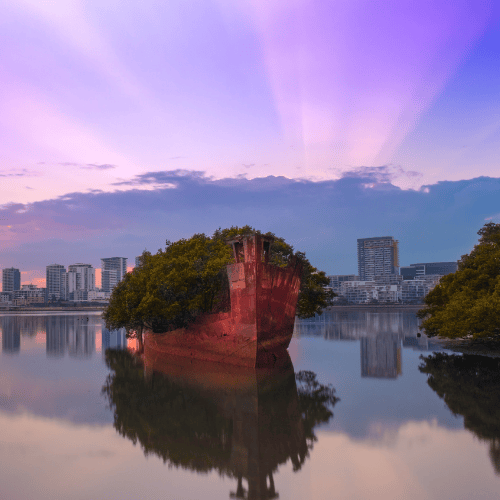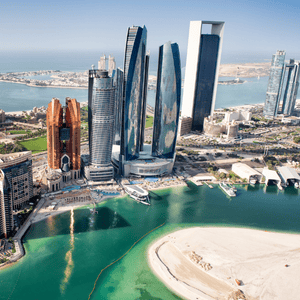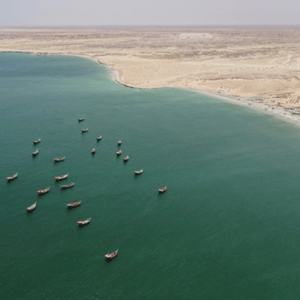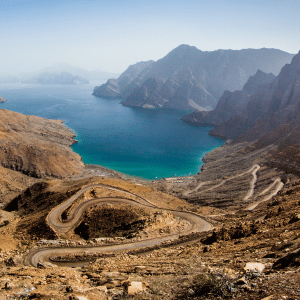Australia’s Floating Forest: The SS Ayrfield, Where Nature Reclaims History in Sydney
Hidden in plain sight in Sydney’s Homebush Bay, far from the city’s iconic skyline and bustling tourist hotspots, lies one of Australia’s most quietly powerful landmarks: the SS Ayrfield. What once was a working World War II-era cargo ship is now overgrown with mangrove trees, forming what locals affectionately call the “Floating Forest.”
More than a fascinating visual spectacle, the SS Ayrfield tells a deeper story — one that touches on resilience, regeneration, and the importance of mindful, responsible tourism in Australia’s urban environments.
From Industrial Workhorse to Natural Wonder
Built in 1911 in the United Kingdom, the SS Ayrfield had a long and industrious life. During World War II, it served as a transport vessel delivering supplies to Allied forces in the Pacific. Eventually decommissioned in the 1970s, the ship was brought to Homebush Bay — a ship-breaking yard at the time — and left to rust.
But nature had other plans. Over the years, seeds from nearby mangrove forests found their way into the hollowed structure of the ship, carried by birds or wind. Against all odds, they took root. Today, dense green foliage bursts from the heart of the wreck, creating an awe-inspiring contrast between human engineering and ecological resilience.
The result? A shipwreck turned forest — unreachable by foot, floating just offshore — offering one of the most compelling examples of nature reclaiming man-made spaces in urban Australia.
Visiting the SS Ayrfield: A Lesson in Responsible Tourism
The SS Ayrfield is best viewed from the Shoreline Walk at Wentworth Point, part of the Sydney Olympic Park precinct. This walking path offers peaceful, car-free access to the bay, where you can quietly observe the ship from a distance.
This is not an attraction to touch or climb. Rather, it’s a reminder of what happens when we step back and allow natural systems to do their work. Visiting the site respectfully — by staying on the trails, not disturbing wildlife, and simply observing — is part of what makes this a destination aligned with the values of eco-conscious travel.
Photography is popular here, and it’s easy to see why. The textures of rust and green, steel and leaf, history and rebirth are striking. But this is also a place for quiet reflection — about human impact, environmental recovery, and how cities like Sydney are integrating nature into their urban renewal.
Homebush Bay: From Polluted Past to Environmental Renewal
For decades, Homebush Bay was heavily industrialized and highly contaminated. Chemical plants, including the infamous Union Carbide facility, had polluted the waters with dioxins and other toxins. By the 1980s, it was considered one of the most degraded areas in the city.
Since then, major efforts have been made to rehabilitate the bay and its surrounding wetlands. While fishing is still banned due to lingering contamination, the land has been transformed into green space, walking paths, and residential neighborhoods. The SS Ayrfield, once part of this industrial history, is now a symbol of transformation — of what’s possible when regeneration is prioritized over exploitation.
Why This Floating Forest Belongs on Your Itinerary
If you’re looking for something more meaningful than typical sightseeing, the SS Ayrfield offers a unique opportunity. It’s a place where nature, history, and sustainability intersect — reminding us that even in the most unlikely places, life can take root again.
Visiting this site supports a broader understanding of responsible tourism in Australia: learning from the past, respecting the present, and protecting what’s left for the future.
